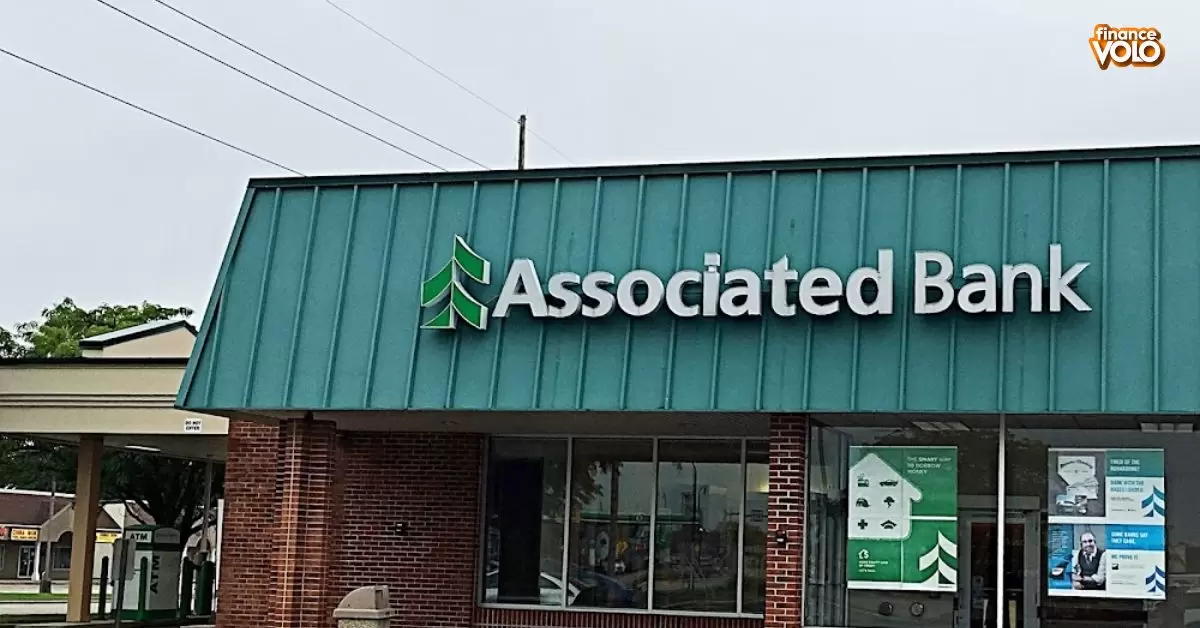A regional bank is a type of financial institution that operates across a specific geographic region or multiple states within the United States. These banks are typically larger than community banks but smaller than nationwide or money center banks.
Regional banks play a crucial role in the banking ecosystem by providing a wide range of financial services to individual consumers, small businesses, and local communities within their operational regions. They serve as an important intermediary between the largest national banks and the smaller community banks, offering a balanced mix of localized services and broader financial capabilities.
Is a Regional Bank Safe?
Regional banks are generally considered safe and secure due to several factors:
- Regulation and Oversight: Like all banks in the United States, regional banks are subject to strict regulations and oversight by various federal and state agencies, such as the Federal Reserve, the Federal Deposit Insurance Corporation (FDIC), and the Office of the Comptroller of the Currency (OCC). These regulatory bodies ensure that banks maintain appropriate levels of capital, follow sound risk management practices, and adhere to consumer protection laws.
- FDIC Insurance: Deposits held at regional banks are insured by the FDIC up to the standard insurance amount of $250,000 per depositor, per insured bank, for each account ownership category. This insurance protects depositors’ funds in the event of a bank failure.
- Diversified Portfolios: Regional banks typically have a diversified portfolio of loans and investments across various sectors and geographic regions within their operational areas. This diversification helps mitigate risk and reduces the impact of localized economic downturns or industry-specific challenges.
- Capital Requirements: Regional banks must meet specific capital requirements set by regulators, which ensure they have sufficient funds to absorb potential losses and maintain financial stability.
While no bank is entirely immune to risks, regional banks are subject to rigorous oversight and regulatory requirements designed to maintain the safety and soundness of the financial system.
Why Do We Need Regional Banks?
Regional banks play a vital role in the banking landscape for several reasons:
- Local Expertise and Relationships: Regional banks have a deep understanding of the local economies, businesses, and communities they serve. This local knowledge allows them to tailor their products and services to meet the specific needs of their customers more effectively.
- Personalized Service: With a more localized presence, regional banks often provide a higher level of personalized service and accessibility compared to larger national banks. Customers can interact with knowledgeable staff who understand their unique financial needs.
- Support for Small and Medium-sized Businesses: Regional banks are crucial sources of credit and financial services for small and medium-sized businesses in their regions. These businesses are often the backbone of local economies, and regional banks play a pivotal role in supporting their growth and development.
- Community Reinvestment: Regional banks are deeply rooted in the communities they serve and often have a strong commitment to reinvesting in those communities through lending programs, charitable contributions, and community development initiatives.
- Competitive Landscape: The presence of regional banks helps maintain a competitive banking environment, offering consumers and businesses more choices and preventing the dominance of a few large national banks.
By serving as a bridge between large national banks and smaller community banks, regional banks contribute to a diverse and resilient banking system that caters to the unique needs of different customer segments and geographic regions.
The Different Types of U.S. Banks
The U.S. banking system consists of several types of financial institutions, each serving specific purposes and customer segments. Here are the main categories:
National Bank
National banks are financial institutions that operate across multiple states and have a presence throughout the United States. These banks are typically the largest and most well-known, such as JPMorgan Chase, Bank of America, Wells Fargo, and Citigroup. They offer a wide range of financial products and services to both individual and corporate customers.
Regional Bank
As mentioned earlier, regional banks operate within a specific geographic region or multiple states, providing a variety of banking services to individuals, small businesses, and local communities. Examples of regional banks include Associated Bank, First National Bank of Omaha (FNBO), Flagstar Bank, Prosperity Bank, and Zions Bank.
Community Bank
Community banks are locally owned and operated financial institutions that primarily serve a specific town, city, or rural area. They are typically smaller than regional banks and focus on meeting the banking needs of local residents, small businesses, and community organizations. Examples of community banks include First Bank, Centier Bank, and Community Bank.
Credit Union
Credit unions are member-owned, not-for-profit financial cooperatives that provide banking services to their members. Membership is typically based on factors such as employment, community, or organizational affiliation. Credit unions often offer competitive rates on loans and deposit accounts, as well as personalized service. Examples of credit unions include Navy Federal Credit Union, State Employees’ Credit Union, and Pentagon Federal Credit Union.
These different types of banks cater to various customer segments and geographic areas, fostering a diverse and competitive banking landscape in the United States.
Advantages and Disadvantages of Using a Regional Bank
Like any financial institution, regional banks have their own set of advantages and disadvantages that consumers and businesses should consider.
Advantages
- Localized Focus: Regional banks have a strong understanding of the local economies, businesses, and communities they serve, allowing them to tailor their products and services to meet specific regional needs.
- Personalized Service: With a more localized presence, regional banks often provide a higher level of personalized service and accessibility compared to larger national banks.
- Community Involvement: Regional banks are deeply rooted in the communities they serve and often actively participate in local events, charitable initiatives, and community development programs.
- Competitive Rates and Fees: Regional banks may offer competitive rates on loans, mortgages, and deposit accounts, as well as lower fees, to attract and retain customers in their regions.
- Relationship Banking: Regional banks often emphasize building long-term relationships with their customers, which can lead to better understanding of their financial needs and more tailored solutions.
Disadvantages
- Limited Geographic Reach: Regional banks typically operate within a specific region or multiple states, which may limit their ability to serve customers who move outside their service areas or have nationwide banking needs.
- Fewer Branches and ATMs: Compared to national banks, regional banks may have a smaller network of branches and ATMs, potentially making it less convenient for customers who frequently travel or relocate.
- Limited Product Offerings: While regional banks offer a wide range of products and services, their offerings may be more limited compared to larger national banks, especially when it comes to specialized services or investment options.
- Potential Acquisition or Merger: Regional banks may be acquired by larger national banks or merge with other regional banks, which could lead to changes in products, services, and policies.
- Regulatory Challenges: Regional banks must comply with various federal and state regulations, which can be a significant operational and financial burden, potentially impacting their ability to innovate or offer new products and services.
It’s important for consumers and businesses to carefully evaluate their specific banking needs and weigh the advantages and disadvantages of using a regional bank versus other types of financial institutions.
What Types of Services Do Regional Banks Offer?
Regional banks offer a wide range of financial products and services to cater to the needs of individual consumers, small businesses, and local communities within their operational regions. Here are some of the common services provided by regional banks:
Deposit Accounts
- Checking accounts (personal and business)
- Savings accounts
- Money market accounts
- Certificates of deposit (CDs)
- Individual Retirement Accounts (IRAs)
Loan Products
- Mortgages (conventional, FHA, VA)
- Home equity loans and lines of credit
- Auto loans
- Personal loans
- Student loans
- Small business loans
- Commercial real estate loans
Business Banking
- Business checking and savings accounts
- Merchant services (credit card processing)
- Payroll services
- Cash management solutions
- Commercial lending
- Treasury management
- Wealth management and trust services
Credit Cards
- Consumer credit cards
- Business credit cards
- Rewards programs
- Balance transfer offers
ATMs
- Proprietary ATM networks
- Participation in interbank ATM networks (e.g., Allpoint, MoneyPass)
Investments
- Brokerage services
- Investment advisory services
- Mutual funds
- Annuities
- Insurance products (life, auto, home)
Regional banks may offer additional specialized services or customized solutions tailored to the specific needs of their local communities and customer bases.
Examples of Regional Banks in the U.S.
Here are some notable examples of regional banks operating in various parts of the United States:
Associated Bank
Associated Bank is a regional bank headquartered in Green Bay, Wisconsin, with branches throughout Wisconsin, Illinois, and Minnesota. It offers a full range of banking services, including personal and business banking, wealth management, and commercial lending.
First National Bank of Omaha (FNBO)
First National Bank of Omaha (FNBO) is a regional bank based in Omaha, Nebraska, serving customers in Nebraska, Iowa, Illinois, Colorado, Kansas, Texas, and South Dakota. FNBO offers a wide range of personal and business banking services, including checking and savings accounts, loans, credit cards, and wealth management solutions.
Flagstar Bank
Flagstar Bank is a regional bank headquartered in Troy, Michigan, with branches primarily in Michigan, Indiana, California, Wisconsin, and Ohio. It provides personal and commercial banking services, including mortgages, home equity loans, and investment products.
Prosperity Bank
Prosperity Bank is a regional bank based in Houston, Texas, with branches throughout Texas and Oklahoma. It offers a full suite of banking products and services for personal, commercial, and wealth management clients.
Zions Bank
Zions Bank is a regional bank headquartered in Salt Lake City, Utah, with branches across Utah, Idaho, Wyoming, Colorado, Nevada, Arizona, and New Mexico. It provides a range of personal and business banking services, as well as wealth management and investment solutions.
These examples illustrate the diverse geographic footprints and specialized offerings of regional banks across different regions of the United States.
How Do Regional Banks Make Money?
Regional banks generate revenue and profit through various sources, similar to other financial institutions. Here are some of the primary ways regional banks make money:
- Interest Income: One of the main sources of revenue for regional banks is the interest earned on loans, such as mortgages, personal loans, auto loans, and commercial loans. Banks charge interest rates on these loans, which are typically higher than the rates they pay on deposits, creating a spread that contributes to their profits.
- Non-interest Income: Regional banks also generate income from various fees and service charges, including account maintenance fees, overdraft fees, ATM fees, credit card fees, and investment management fees.
- Investment Income: Regional banks invest a portion of their funds in various securities, such as government bonds, municipal bonds, and other fixed-income instruments. The interest earned on these investments contributes to their overall revenue.
- Fee-based Services: Regional banks may offer fee-based services like wealth management, trust administration, investment advisory, and cash management services, generating additional non-interest income.
- Deposit Services: Regional banks earn a portion of their revenue from fees associated with deposit accounts, such as monthly maintenance fees, overdraft charges, and wire transfer fees.
- Interchange Fees: When customers use debit or credit cards issued by a regional bank, the bank earns a portion of the interchange fees charged to merchants for processing those transactions.
- Loan Sales and Securitization: Regional banks may sell loans or package them into securities, generating income from the sale or securitization of these assets.
Effective management of interest rates, lending practices, fee structures, and operational costs are crucial for regional banks to maintain profitability while providing competitive products and services to their customers.
Regional Banks vs. Community Banks vs. National Banks
While regional banks occupy a middle ground between community banks and national banks, there are distinct differences among these types of financial institutions. Here’s a comparison:
Regional Banks
- Operate across multiple states or a specific geographic region
- Larger in size and asset base compared to community banks
- Offer a broader range of products and services
- May have a more extensive branch and ATM network
- Often cater to both individual and business customers
- Typically have a regional or multi-state focus
Community Banks
- Operate within a local community, city, or rural area
- Smaller in size and asset base
- Offer basic banking services like checking, savings, and lending
- Limited branch and ATM network
- Focus primarily on serving local individuals and small businesses
- Emphasize personalized service and community involvement
National Banks
- Operate across multiple states and have a nationwide presence
- Largest in size and asset base
- Offer a comprehensive range of banking and financial services
- Extensive branch and ATM networks across the country
- Serve a diverse customer base, including individuals, businesses, and corporations
- Often have international operations and a global reach
When choosing a banking partner, customers should consider factors such as the geographic reach, product offerings, service levels, and fees associated with each type of bank to determine the best fit for their specific needs.
Ultimately, regional banks aim to strike a balance between the localized focus and personalized service of community banks and the broader product offerings and resources of national banks, catering to the unique needs of their regional customer base.
Pros and Cons of Regional Banks
Here are some key pros and cons to consider when evaluating regional banks:
Pros:
- Localized knowledge and relationships
- Personalized service and accessibility
- Community involvement and reinvestment
- Competitive rates and fees
- Relationship-based banking
- Diverse product offerings
Cons:
- Limited geographic reach
- Fewer branches and ATMs
- Potential product limitations
- Regulatory challenges
- Possibility of acquisition or merger
Regional banks can be an attractive option for customers seeking a balance between personalized service, community involvement, and a wider range of financial products and services. However, it’s important to evaluate individual needs and preferences to determine if a regional bank aligns with one’s banking requirements.
By understanding the unique characteristics, advantages, and potential drawbacks of regional banks, consumers and businesses can make an informed decision about their banking partner and choose the option that best suits their financial goals and preferences.
Frequently Asked Questions
What is a regional bank?
A regional bank is a financial institution that operates across a specific geographic region or multiple states within the United States, offering a variety of banking services to individuals, businesses, and communities.
Why are regional banks important?
Regional banks contribute to a diverse and competitive banking environment, support local economies through lending to small and medium-sized businesses, provide personalized service, and reinvest in their communities.
Are regional banks safe?
Yes, regional banks are generally considered safe due to regulations and oversight by federal and state agencies, FDIC insurance on deposits, diversified portfolios, and capital requirements.
What types of services do regional banks offer?
Regional banks offer a wide range of services, including deposit accounts, loan products (mortgages, auto loans, personal loans, business loans), business banking, credit cards, ATM networks, and investment and wealth management solutions.
Conclusion
Regional banks play a vital role in the U.S. banking landscape, bridging the gap between large national banks and smaller community banks. They offer a wide range of financial services tailored to the specific needs of individuals, small businesses, and communities within their geographic regions. With a localized focus and deep understanding of their markets, regional banks provide personalized service, competitive rates, and a commitment to community reinvestment.
Regional banks contribute to a diverse and competitive banking environment, preventing the dominance of a few large national banks. They support local economies by lending to small and medium-sized businesses, fueling job creation and economic growth. By striking a balance between localized service and broader financial capabilities, regional banks cater to customers who value both personal attention and access to diverse banking products. Their presence ensures a resilient, customer-centric banking system that serves the diverse financial needs of Americans nationwide.
















